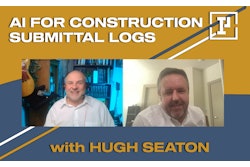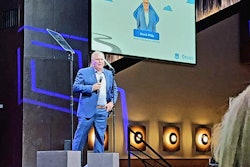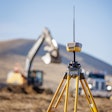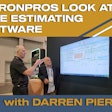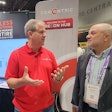
IRONPROS has predicted that merger and acquisition activity among construction software and technology vendors will pick up in 2023 and beyond. These acquisitions can benefit a construction software user base if the vendor successfully embeds the functionality gained into their current product line, which can be difficult, take years or sometimes never quite happens successfully.
Autodesk has demonstrated some competencies in rationalizing acquired products, thanks in large part to early efforts to reimagine them into a net new architecture—which takes both foresight and skill to pull off. In earlier Autodesk coverage, IRONPROS recounts how Autodesk had made a number of acquisitions over the years, rearchitecting some where necessary to create a unified product line that could offer high intra-suite interoperability and extend investments in modern technology broadly across the new, combined suite, Autodesk Construction Cloud. This enabled Autodesk to take disparate products PlanGrid, Assemble Systems and BIM 360 and make more than the sum of the parts.
The 2020 acquisition of Pype, brought to Autodesk an enterprise software application that automated submittal logs, relying on artificial intelligence (AI) to read specs and populate the submittal log, even scanning the spec for missing requirements. In early 2023, Autodesk rolled out AutoSpecs in ACC, which tightly integrates the experience of using AutoSpecs with the Autodesk Construction Cloud offering.
Stand Alone vs Integrated Submittal Log
Submittal logs are a task ripe for automation—a manual and error-prone process that consumes a significant amount of professional time. Integrating it closely with a given project management application seems to make sense. That is the strategy contractors will find in products like HCSS Heavy Job, eSub, Procore Submittal Builder and other broader applications. But there are still standalone softwares like submittals.com and The Link coming to market that, like Pype does, aim to provide enough additional utility or reduce enough complexity to merit integration with a third party.
“The Link was created with a broader purpose in mind, which is to make specifications better, starting with our submittal log product,” The Link CEO Hugh Seaton said. “The Link Submittal Log Creator is tuned to what construction field teams need and includes modes for both Construction Specifications Institute (CSI) formatted specifications, and United Facilities Guide (UFGS) formatted specifications. In the coming months we’ll be adding functionality and products that leverage the latest in AI, combined with decades of field knowledge.”
AutoSpecs in ACC
In order to get a deeper understanding of how embedding this functionality more deeply in Autodesk Construction Cloud changes things for the customer base and those evaluating the software, IRONPROS sat down in April of 2023 with Autodesk Senior Manager of Product Marketing Christine Acker.
IRONPROS: To begin with, what was the genesis of adding this functionality to the product? Why did you make it a priority on the roadmap?
Christine Acker: I'll start with the genesis of adding it to Autodesk Construction Cloud. It gets to the crux of the vision of connected construction and our overall vision for Autodesk Construction Cloud.
As you know, ACC came together as four separate companies that were acquired at different times—BIM 360, PlanGrid, Assemble Systems and BuildingConnected. And over time, we've integrated all those point solutions and offerings to create a truly unified platform that can best serve our customers from design through construction. And so Pype was acquired in July of 2020. And a visionary like Autodesk will continue to grow the product, both through building new functionality, but also, we've acquired products since then. We are making these strategic investments and then taking steps to unify them onto our unified platform of Autodesk Construction Cloud. When we are talking to customers over and over again, we say, “Hey, what's the best aspect of Autodesk Construction Cloud?” And nine times out of 10, it is, “The fact that it is that one place I know I can go to for every single thing I need.” And so that is the beauty of a unified platform.
IRONPROS: When it comes to how AutoSpecs works now, what do you think is different now that you've made this move? And what do you think that users of that historical product are going to find the same or different?
CHRISTINE ACKER: There's an aspect of AutoSpecs that makes people who know it, love it. I came from construction, and I was that intern who was handed a 300-page spec book and told to go and find all these submittals and put it into Excel, and then send the Excel off. And I was that intern who was scared to death I was going to miss a submittal item and have it create issues down the road. I took probably weeks to do it and double and triple checked myself. While this functionality of AutoSpecs existed with Pype as AutoSpecs standalone, not everyone is completely bought into the benefits of the submittal log process. I think by bringing it onto our unified platform, it just creates a bigger stage to let our customers see us and leverage this functionality. And there's many ways that Pype AutoSpecs is more than just submittal log builder, right? It generates the submittal log, like within minutes very, very quickly. It also has the ability to pull in more than just traditional submittals. It can get product data, QA QC, mockups, close out packages. These are things that a new intern out of college wouldn't necessarily know to grab and pull. And then it leverages powerful AI to suggest potentially missing submittals.
I think one of the most powerful aspects of it is having that AI within our unified platform. It will certainly be a foundation for us to determine: Where can we go from here? Where can we expand? How can we leverage the capabilities of Pype AutoSpecs and our unified platform, and build out different functionality with that solid foundation that we now have, since it's on our unified platform?
IRONPROS: Will handoffs between AutoSpecs and the rest of ACC now be more automated or graceful? Or is there increased transparency from more of a process standpoint? What's the benefit there?
CHRISTINE ACKER: There are actually two things that come to mind. For one, it's very easy to publish the draft submittal logs directly into Autodesk Build. You match the submittal types and push it over to Build without having to log in and out of another platform, without even having to leave like your browser on the web. So that is very streamlined or, as you said, graceful. And the other powerful thing is you have the ability to save PDFs of the specs, as well as the submittal log in Excel, into Autodesk Docs. When you're talking about a true common data environment and having one place for everything you have, while everyone may not have and may not need AutoSpecs on your team, some people may just have Autodesk Docs. And by sharing it and having it within Docs, you have that information there as well. And again, you don't have to leave the product or log in to another application, you can just publish the Docs and get all of that information there.
IRONPROS: One other area that kind of jumped out to me is the AI angle. Anything where folks use those magical initials of AI, I mean, obviously, yeah, there's some cool factor there we should talk about. Is this AI your type of guide-on-the-side for certain decision processes, or how does that function?
CHRISTINE ACKER: The machine learning engine has been built up and trained with the spec books that they initially trained it on when they built it, as well as all the spec books that have been ingested from Pype AutoSpecs throughout the years—and now a lot of specs in ACC, too. What it is able to do is look at similar size and type of projects—and that could be projects in Florida or projects in Boston, and then use that to intelligently recommend submittals that are missing. And so, it's not just, “Hey, all the projects that we've ever looked at have this rebar, specify this rebar.” Maybe there is a requirement about what country the steel came from. The machine learning engine will determine based on projects of a given size or type that there's often an additional submittal requirement, and this is potentially missing. Then as the general contractor, you can go back to that owner and say, “Hey, is this a missing submittal item? Do we want to add it to the spec book and make sure it's covered before it gets too late?”
You see other products on the market that will extract the submittal items that are just listed under submittals in the spec book. And while that's many of them, there are other ones that live outside of these, like product data, QA QC, and our machine learning engine has been trained to pull additional requirements beyond what is listed under submittals.
IRONPROS: Yes—this seems in keeping with other use cases we are seeing in preconstruction including estimating and bidding. If you miss something, it is expensive and investing to eliminate that risk can make sense.
CHRISTINE ACKER: Think of the trope we hear over and over about how razor thin construction margins always are. But really, upfront work like the takeoff, like the estimating, like putting this submittal log together helps to set you up for success during that construction project. Because if you start with a good solid foundation and leverage technology in a way that allows you to be more comprehensive, but yet more efficient, you then don't have to worry about starting the project unknowingly missing three submittals that will cost $10,000 in rework down the line.
IRONPROS: So, because we have a number of sister publications that live more on the heavy/highway/civil side, how will AutoSpecs or AutoSpecs in ACC be of particular interest to this crowd?
CHRISTINE ACKER: Thinking of metro when I was in construction, we did a lot of metro rehab, which is a lot of heavy, civil work. There's a lot of regulations on when you can get into metros and into the tunnels, and you have to do safety check-ins. So many times, you have to do it nights or weekends because shutdowns during the day—they want to keep the trains running. When it got down to it, you didn't really have an eight-hour shift to get the work done. You had maybe four hours, maybe five hours. And so already, these teams are working at a deficit, if you will. Using and leveraging technology in the best way they can to work through that.
BOTTOM LINE: Merging disparate acquired products is hard, and slow. Autodesk has exhibited a slow and steady approach, starting with a strategic approach to acquisitions with regard to both the functionality they bring and their underlying architecture. Autodesk Construction Cloud will likely continue to grow through deeper integration within the suite and external parties, and through new organic development. It is heartening though to see that the construction vendors of the 2020s have by and learned the lessons taught by some enterprise software acquisitions of the past. IRONPROS anticipates more consolidation in the enterprise software space. But the maturity and operational competence of companies like Autodesk should lessen the anxiety of contractors on companies that are or may be acquired.

